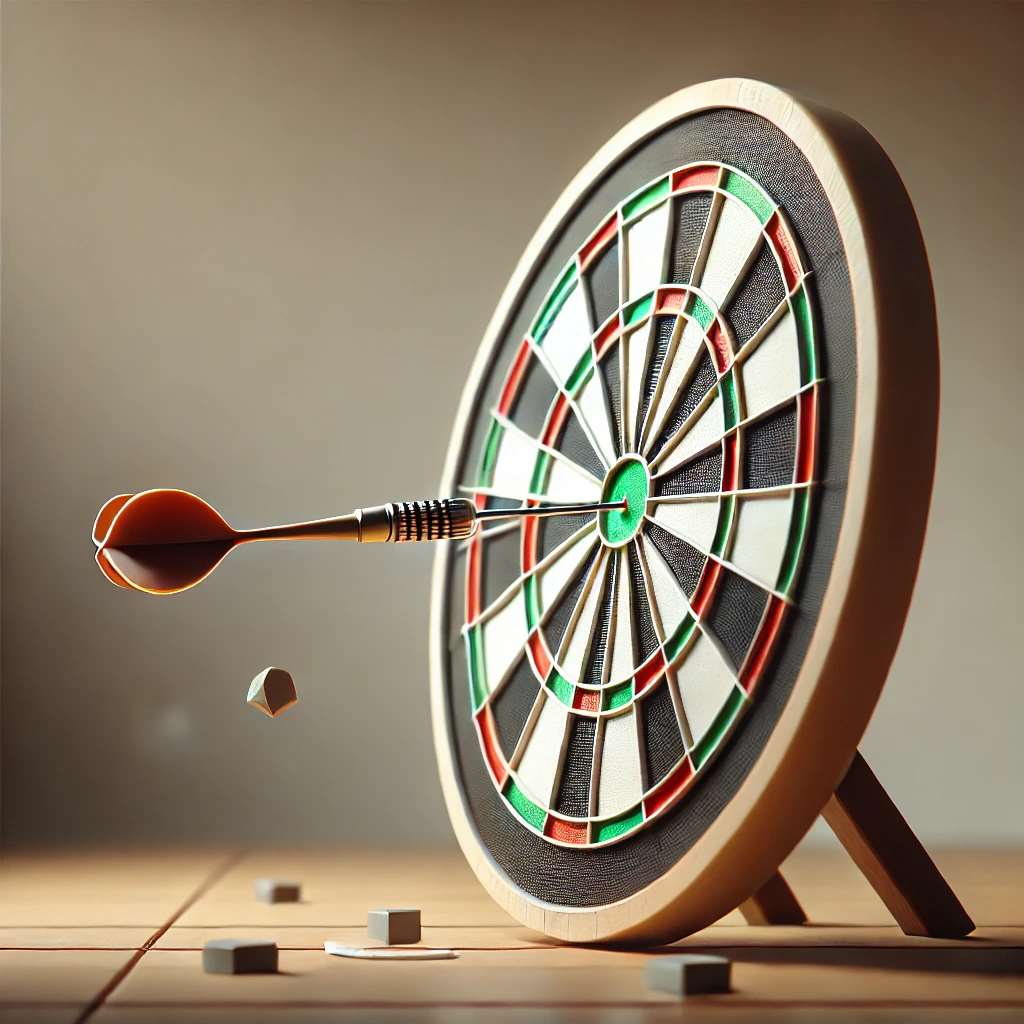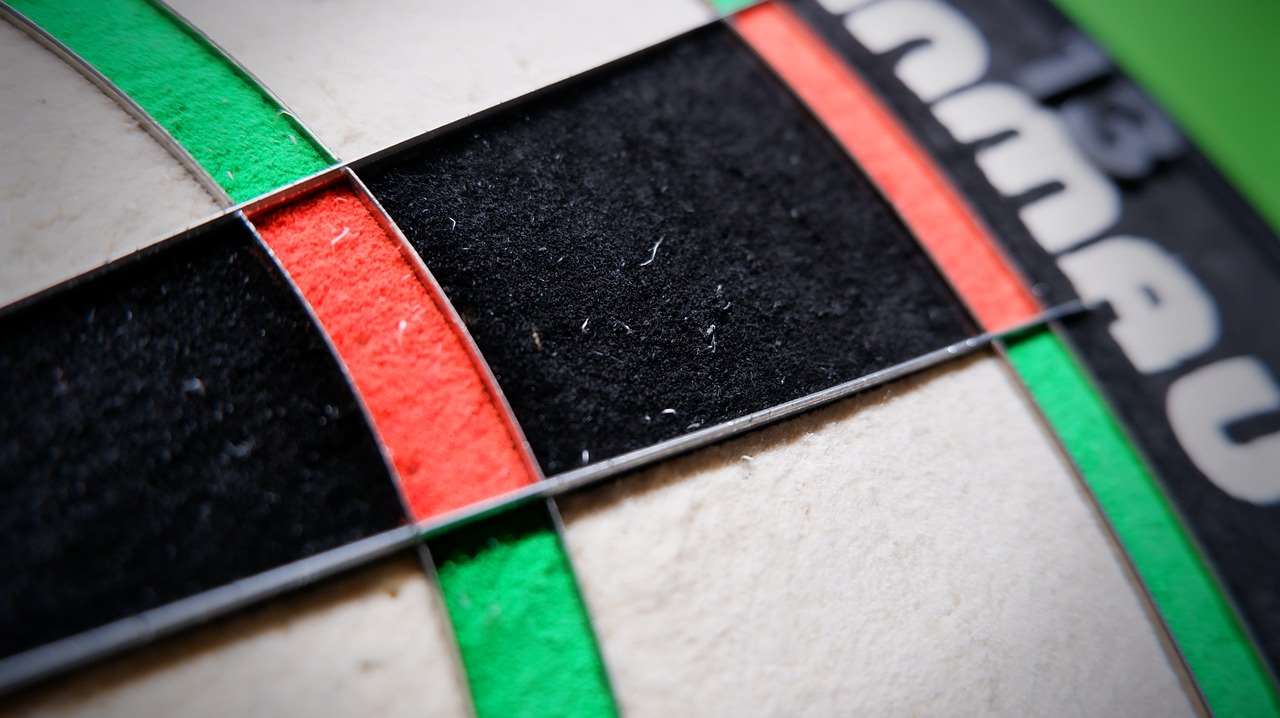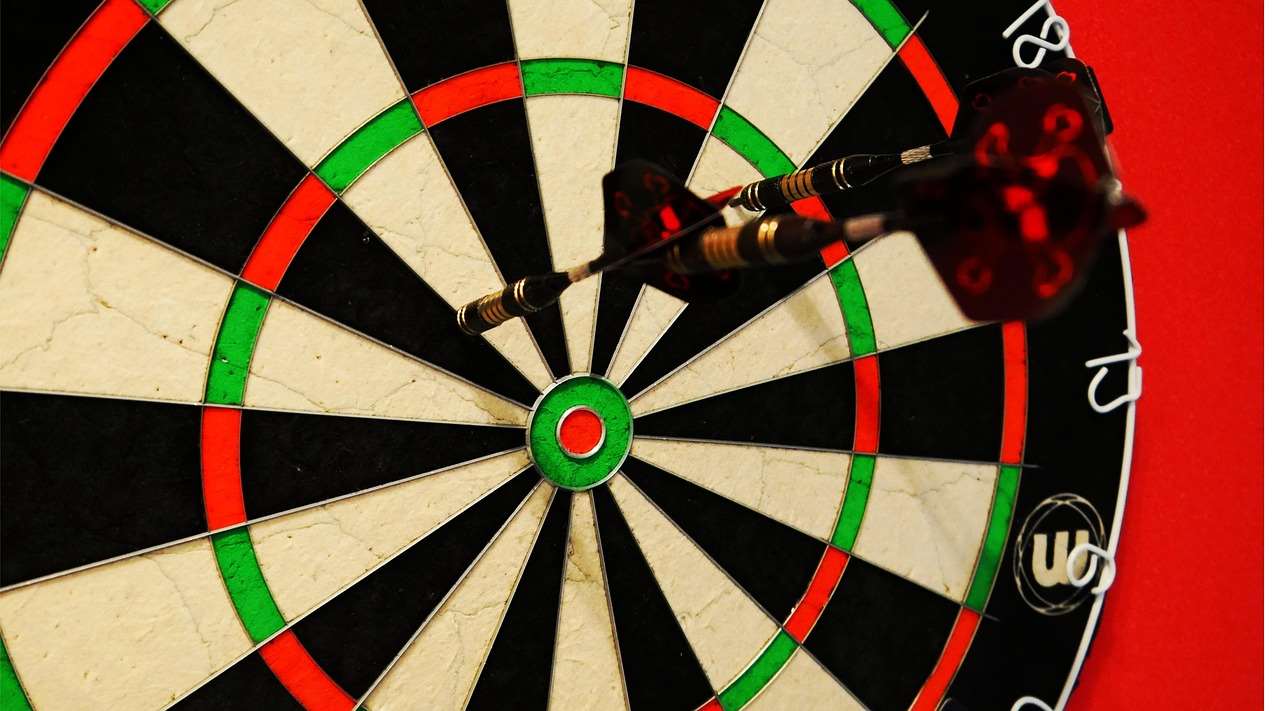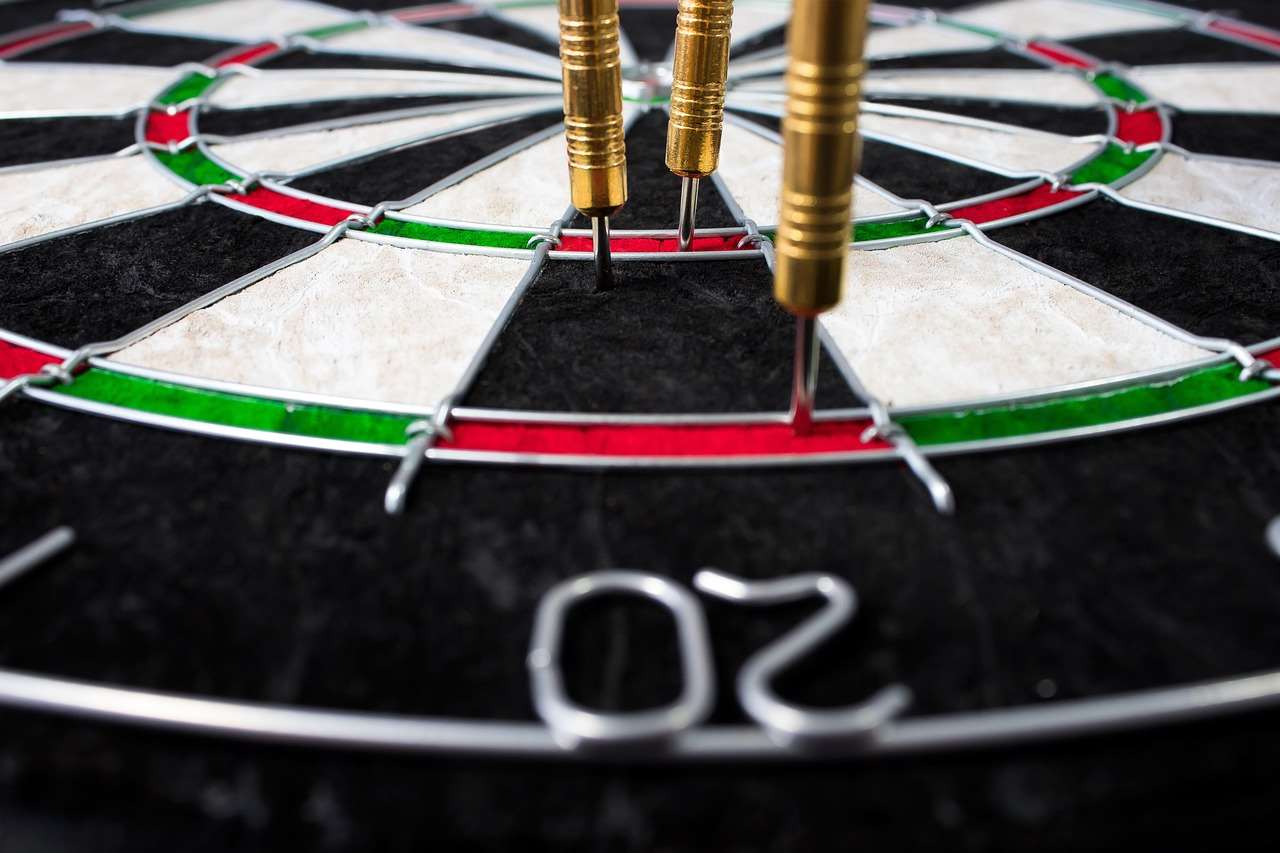Darts for disability groups offers a fantastic avenue for social interaction, skill development, and competitive fun, and this article aims to show you how to make it accessible and enjoyable for everyone. We’ll cover everything from adaptive equipment and rule modifications to creating inclusive environments and promoting participation.
⚠️ Still Using Pen & Paper (or a Chalkboard)?! ⚠️
Step into the future! The Dart Counter App handles all the scoring, suggests checkouts, and tracks your stats automatically. It's easier than you think!
Try the Smart Dart Counter App FREE!Ready for an upgrade? Click above!
Making Darts Accessible: Darts For Disability Groups
Creating opportunities for disabled people to participate in sports like darts is crucial for promoting inclusivity and well-being. Darts for disability groups can provide a fun, engaging, and competitive outlet for individuals of all abilities. However, it’s essential to understand the specific challenges and adaptations needed to ensure accessibility and enjoyment for everyone involved.

Understanding Individual Needs
The first step in making darts accessible is to understand the diverse range of needs within disability groups. Consider the following:
- Visual Impairments: Adaptations might include tactile dartboards, audible cues, or sighted assistants.
- Mobility Impairments: Providing seated throwing positions, adaptive throwing aids, or adjusting the oche distance can be beneficial.
- Cognitive Impairments: Simplifying rules, providing clear instructions, and offering additional support can help individuals participate effectively.
- Upper Limb Impairments: Adaptive equipment like dart holders or modified throwing techniques may be necessary.
It’s crucial to engage with participants directly to understand their specific needs and preferences. This personalized approach ensures that the adaptations implemented are effective and contribute to a positive experience. Remember that creating an inclusive environment extends beyond physical accommodations; it includes fostering a supportive and understanding atmosphere.
Adaptive Equipment and Modifications
A variety of adaptive equipment and modifications can be implemented to make darts more accessible for individuals with disabilities. These adaptations can address a range of impairments and allow participants to engage in the game more effectively.
Dartboards and Setup
Consider these modifications to the dartboard and its setup:
- Lowering the Dartboard: The standard height of the bullseye (5’8″) might be inaccessible for wheelchair users or individuals with limited reach. Lowering the dartboard to a comfortable height is a simple but effective adaptation.
- Adjustable Oche: An adjustable oche (the throwing line) allows individuals to throw from a comfortable distance, regardless of their mobility or reach.
- Tactile Dartboards: For individuals with visual impairments, tactile dartboards with raised segments and Braille markings can provide a way to identify scoring zones.
- Good Lighting: Adequate and well-positioned lighting is essential for all participants, but especially important for those with visual impairments. Ensure the dartboard is brightly lit and free from glare.
Remember to consult with participants to determine the optimal setup for their individual needs. A well-configured dartboard and oche can make a significant difference in their ability to participate and enjoy the game. You can use these Travel Tips For Darts Tournaments when considering transporting the dartboard and equipment to different locations.
Adaptive Throwing Aids
For individuals with upper limb impairments, adaptive throwing aids can provide the support and stability needed to throw darts accurately. These aids can range from simple dart holders to more complex mechanical devices.
- Dart Holders: Dart holders can help individuals with limited grip strength or dexterity hold and release darts.
- Throwing Frames: Throwing frames provide a stable platform for the arm and hand, allowing for more controlled and accurate throws.
- Customized Grips: Customized grips can be designed to fit the specific needs of the individual, providing a more comfortable and secure grip on the dart.
When selecting adaptive equipment, it’s important to consider the individual’s specific needs and preferences. Consult with occupational therapists or other specialists to determine the most appropriate aids. Experimentation and feedback are essential to finding the right equipment that allows participants to throw darts comfortably and effectively.

Modifying the Rules of Darts
In addition to adaptive equipment, modifying the rules of darts can make the game more accessible and enjoyable for individuals with disabilities. These modifications can address a range of impairments and ensure that everyone has a fair and equal opportunity to participate. Think about looking at the Darts Culture And Community Guide to understand how the sport is enjoyed by a vast audience.
Simplified Scoring Systems
For individuals with cognitive impairments, simplifying the scoring system can make the game easier to understand and participate in.
- Focus on Specific Targets: Instead of aiming for specific scores, participants can focus on hitting specific targets on the dartboard, such as the bullseye or specific numbers.
- Team-Based Scoring: Dividing participants into teams and assigning scoring roles can reduce the cognitive load on individuals.
- Visual Aids: Using visual aids, such as large-print scorecards or diagrams of the dartboard, can help participants track their progress.
By simplifying the scoring system, you can make the game more accessible and less intimidating for individuals with cognitive impairments. The goal is to create a fun and engaging experience that promotes participation and skill development.
Alternative Throwing Rules
For individuals with mobility impairments, alternative throwing rules can be implemented to accommodate their needs.
- Seated Throwing: Allowing participants to throw darts from a seated position can make the game more accessible for wheelchair users or individuals with limited mobility.
- Assisted Throwing: Providing assistance with aiming or releasing the dart can help individuals with upper limb impairments participate more effectively.
- Foot Fault Flexibility: Loosening the foot fault rules can allow participants to adjust their throwing position to accommodate their needs.
When implementing alternative throwing rules, it’s important to ensure that they are fair and consistent for all participants. The goal is to create a level playing field that allows everyone to compete effectively, regardless of their mobility or physical limitations.
Creating an Inclusive Environment
Creating an inclusive environment is essential for promoting participation and enjoyment in darts for disability groups. This involves not only physical accessibility but also fostering a supportive and understanding atmosphere.
Promoting Positive Attitudes
Educating participants and volunteers about disability awareness and inclusion is crucial for promoting positive attitudes. This can involve workshops, training sessions, or simply open discussions about the importance of respect and understanding.
- Disability Awareness Training: Providing training on different types of disabilities, communication strategies, and appropriate etiquette can help participants and volunteers interact more effectively.
- Challenging Stereotypes: Addressing common stereotypes and misconceptions about disability can help create a more inclusive and accepting environment.
- Celebrating Diversity: Recognizing and celebrating the unique contributions of individuals with disabilities can foster a sense of belonging and value.
By promoting positive attitudes, you can create a welcoming and supportive environment where everyone feels valued and respected. This is essential for encouraging participation and fostering a sense of community within darts for disability groups.

Encouraging Social Interaction
Darts provides a great opportunity for social interaction and building relationships. Encourage participants to interact with each other, both on and off the dartboard.
- Team-Based Activities: Organize team-based activities, such as doubles tournaments or group practice sessions, to encourage collaboration and communication.
- Social Events: Host social events, such as potlucks or game nights, to provide opportunities for participants to socialize and build relationships outside of darts.
- Mentorship Programs: Pair experienced players with new participants to provide guidance, support, and encouragement.
By encouraging social interaction, you can create a sense of community and belonging within darts for disability groups. This can enhance the overall experience and promote long-term participation. Don’t forget about the Atmosphere At Live Darts Matches and how important it is for people to participate.
Promoting Darts For Disability Groups
Once you have created an accessible and inclusive environment, it’s important to promote darts for disability groups to reach a wider audience. Effective promotion can help attract new participants and volunteers, and raise awareness about the benefits of the sport.
Reaching Out to Disability Organizations
Partnering with local disability organizations can be a great way to reach potential participants. These organizations can help you promote your program to their members and provide valuable support and resources.
- Contact Local Chapters: Reach out to local chapters of national disability organizations, such as the National Disability Rights Network or the Disability Rights Education & Defense Fund.
- Attend Disability Events: Participate in disability events, such as conferences or workshops, to promote your program and network with potential participants.
- Offer Demonstrations: Offer demonstrations of darts for disability groups at disability organizations or community centers to showcase the sport and its benefits.
By partnering with disability organizations, you can tap into a valuable network of potential participants and volunteers. This can help you grow your program and reach a wider audience.

Utilizing Social Media
Social media is a powerful tool for promoting darts for disability groups and reaching a wider audience. Use social media platforms to share information about your program, highlight success stories, and engage with potential participants and volunteers.
- Create a Facebook Page: Create a Facebook page for your program to share updates, photos, and videos.
- Use Relevant Hashtags: Use relevant hashtags, such as #disabilitysports, #inclusivesports, and #adaptiveathlete, to reach a wider audience.
- Engage with Followers: Respond to comments and messages promptly and engage with your followers to build a community.
By utilizing social media effectively, you can raise awareness about darts for disability groups and attract new participants and volunteers. Remember to use inclusive language and imagery to ensure that your message resonates with a diverse audience.
The Benefits of Darts for Individuals with Disabilities
Participation in Darts For Disability Groups offers a wide range of benefits, contributing to the physical, mental, and social well-being of individuals with disabilities. Beyond the simple enjoyment of the game, darts can provide significant improvements in various aspects of life.
Physical Benefits
Darts, even with modifications, can offer several physical benefits:
- Improved Hand-Eye Coordination: The repetitive motion of aiming and throwing darts helps improve hand-eye coordination and fine motor skills.
- Increased Muscle Strength: The act of throwing darts can help strengthen muscles in the arm, shoulder, and back.
- Enhanced Balance and Stability: Maintaining balance while throwing darts can help improve overall balance and stability, especially for individuals with mobility impairments.
Mental and Cognitive Benefits
The mental engagement required in darts provides cognitive stimulation and can improve mental well-being:
- Improved Focus and Concentration: Darts requires focus and concentration, which can help improve these skills over time.
- Enhanced Strategic Thinking: Planning throws and calculating scores can help improve strategic thinking and problem-solving skills.
- Reduced Stress and Anxiety: The act of playing darts can be a relaxing and enjoyable activity, helping to reduce stress and anxiety.

Social Benefits
Perhaps the most significant benefits come from the social interaction and community fostered in darts for disability groups:
- Increased Social Interaction: Darts provides opportunities to interact with other people, build relationships, and make new friends.
- Improved Self-Esteem: Achieving success in darts can help improve self-esteem and confidence.
- Sense of Belonging: Participating in a group activity can foster a sense of belonging and community, which is especially important for individuals who may experience social isolation.
Ultimately, darts for disability groups creates opportunities for skill development, self-improvement, and community engagement. Consider the What To Expect At Live Darts for an overview on what people get out of participating.
Conclusion
Darts for disability groups offers a powerful and inclusive way to engage individuals of all abilities in a fun and rewarding activity. By implementing appropriate adaptations, modifications, and creating a supportive environment, you can unlock the numerous physical, mental, and social benefits that darts can provide. Remember, understanding individual needs, promoting positive attitudes, and utilizing effective outreach strategies are key to creating a successful and thriving darts for disability group. Take the first step today – reach out to your local disability organizations, gather your equipment, and start creating opportunities for inclusive darting! Consider reading Fan Culture At Live Darts for information on how this sport is enjoyed widely.
Hi, I’m Dieter, and I created Dartcounter (Dartcounterapp.com). My motivation wasn’t being a darts expert – quite the opposite! When I first started playing, I loved the game but found keeping accurate scores and tracking stats difficult and distracting.
I figured I couldn’t be the only one struggling with this. So, I decided to build a solution: an easy-to-use application that everyone, no matter their experience level, could use to manage scoring effortlessly.
My goal for Dartcounter was simple: let the app handle the numbers – the scoring, the averages, the stats, even checkout suggestions – so players could focus purely on their throw and enjoying the game. It began as a way to solve my own beginner’s problem, and I’m thrilled it has grown into a helpful tool for the wider darts community.